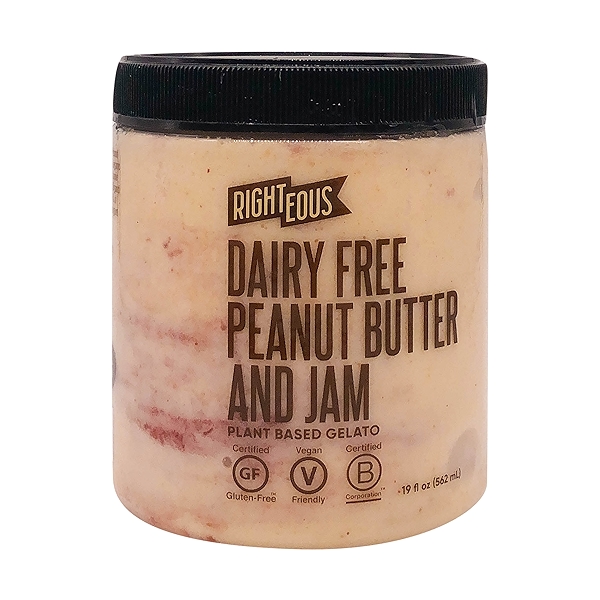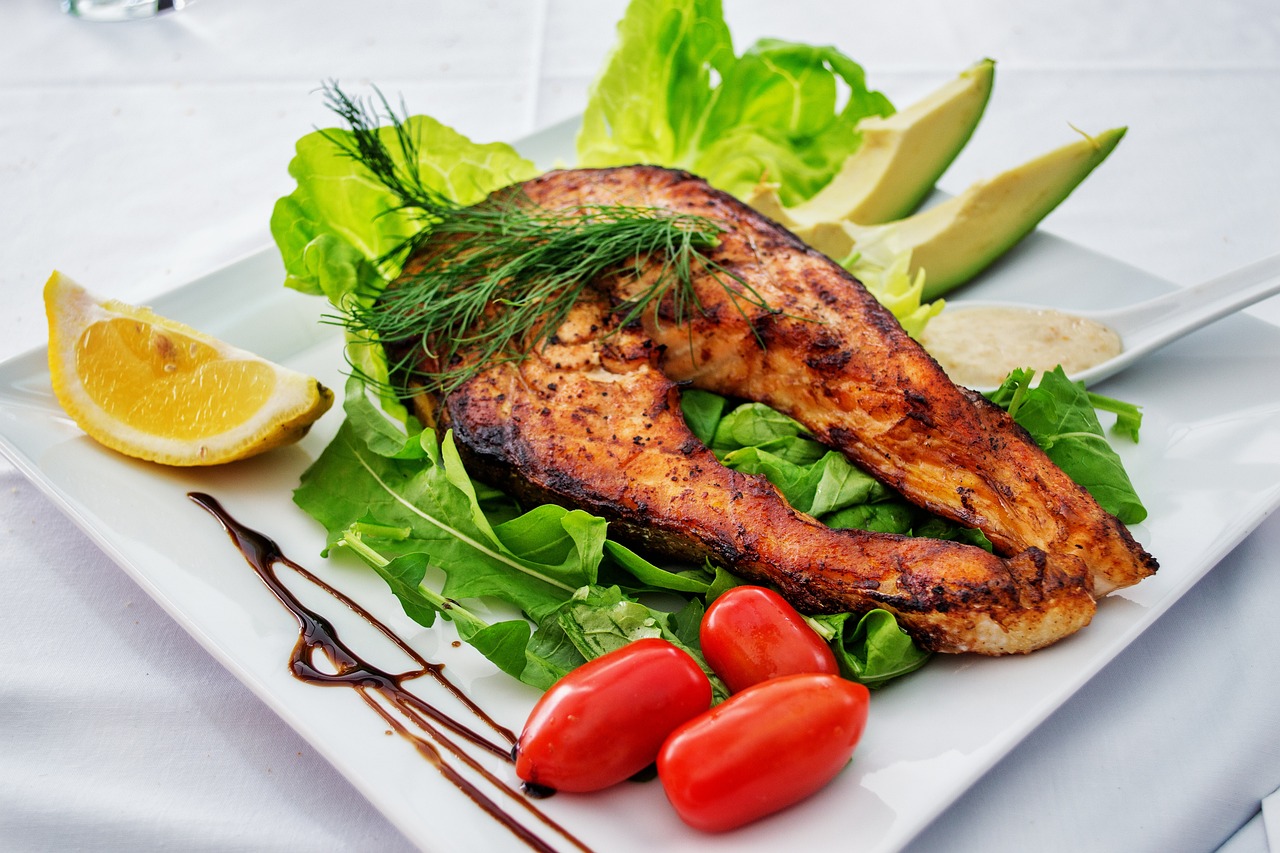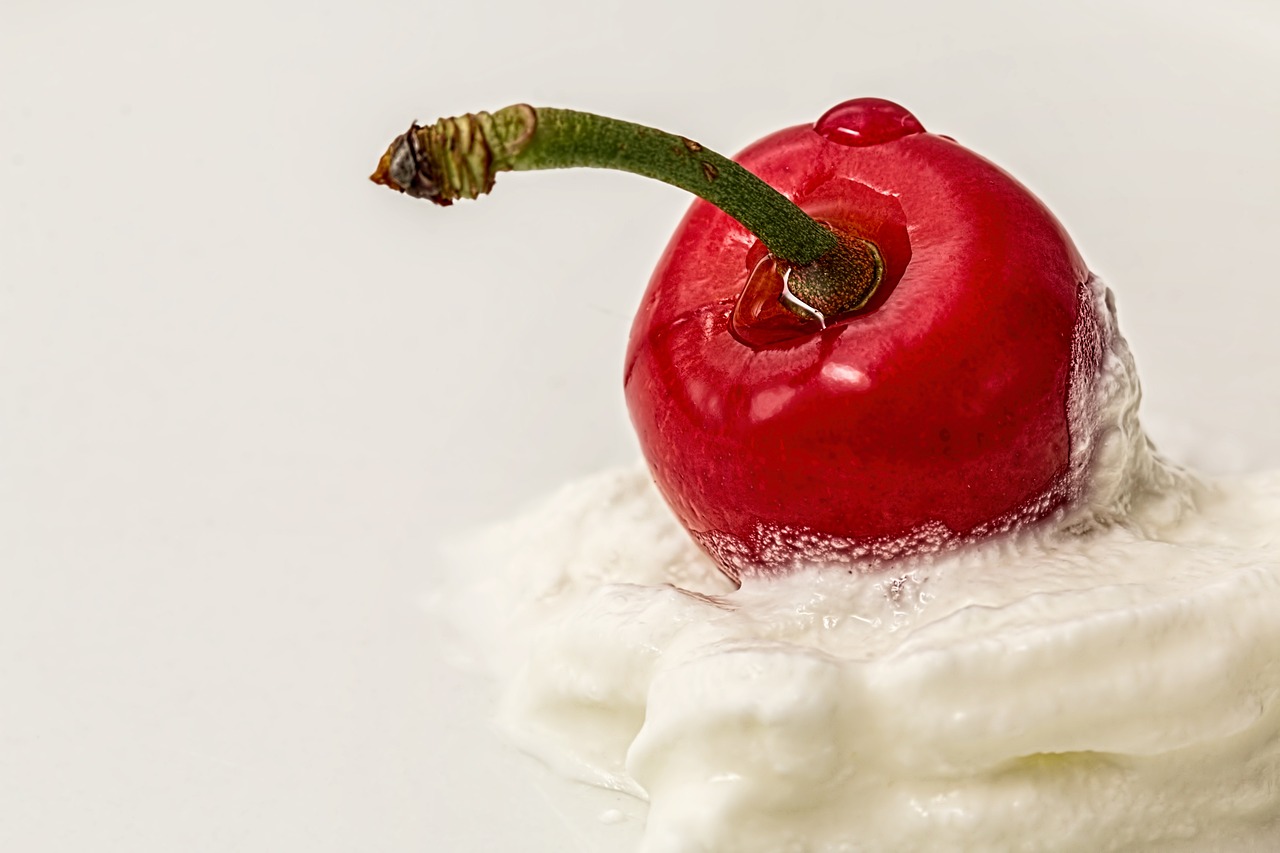Introduction
For individuals following vegan or dairy-free diets, ghee might seem like an unlikely candidate for the dining table. However, ghee’s rich flavor and versatility have led to the development of plant-based alternatives that cater to these dietary preferences. In this article, we will explore the role of ghee in vegan and dairy-free diets, uncovering alternative options and providing delicious recipes for those seeking to incorporate this versatile ingredient into their meals.
In the realm of dietary choices, vegan and dairy-free diets have gained substantial popularity, often as a reflection of ethical, environmental, or health-conscious decisions. For individuals adhering to these lifestyles, ghee may initially appear as a dietary no-go due to its dairy origin. However, culinary innovation and the quest for plant-based alternatives have paved the way for ghee’s transformation, making it a welcome addition to the dining table for those with vegan and dairy-free preferences.
The Vegan Ghee Revolution: The realization that ghee’s unique qualities could be replicated in a plant-based form has led to the emergence of vegan ghee. These alternatives, crafted from ingredients like coconut oil, avocado oil, or a blend of plant-based fats, strive to capture the essence of traditional ghee—its richness, flavor, and versatility—while remaining entirely free of animal-derived ingredients.
Plant-Based Richness: Vegan ghee doesn’t compromise on richness and depth of flavor. Just like its dairy counterpart, it possesses a luscious, buttery taste that can elevate the culinary experience in a variety of dishes. From sautéed vegetables to baked goods, its smooth consistency and savory notes make it an excellent choice for plant-based cooking and baking.
Lactose and Casein-Free: One of the primary advantages of vegan ghee is that it is entirely lactose and casein-free. This makes it suitable for individuals with lactose intolerance or dairy allergies, who may have previously missed out on the delightful flavors that ghee brings to dishes.
Diverse Culinary Applications: Vegan ghee mirrors traditional ghee in its adaptability. It can be used for frying, sautéing, roasting, and even as a flavor-enhancing drizzle over popcorn or steamed vegetables. Vegan ghee’s high smoke point ensures that it performs brilliantly in high-heat cooking methods without producing undesirable smoke or flavors.
Delicious Recipes: Embracing the world of vegan ghee opens doors to a wealth of culinary possibilities. In this article, we will delve into creative recipes that showcase the art of plant-based ghee, from delectable curries to golden-brown pancakes. These recipes cater to both experienced plant-based cooks and newcomers looking to explore the diverse and flavorful world of vegan and dairy-free cuisine.
In essence, the development of vegan ghee has transcended the boundaries of traditional dairy-based ghee, making its rich and versatile qualities accessible to individuals following vegan and dairy-free diets. By delving into the world of plant-based alternatives, we celebrate the innovation and creativity of the culinary world, proving once again that with ingenuity, the dining table can be inclusive, diverse, and incredibly delicious, regardless of dietary preferences.
Should you desire more in-depth information, it’s available for your perusal on this page: Good for You: Bold Flavors with Benefits. 100 recipes … – Amazon.com
Ghee, a form of clarified butter, has deep roots in Indian and South Asian cuisines, but it’s not limited to these regions. Its unique characteristics, including a high smoke point and rich, nutty flavor, have made it a favorite cooking fat worldwide. However, traditional ghee is derived from cow’s milk, making it unsuitable for vegans and those with dairy allergies or lactose intolerance.
nullFor a comprehensive look at this subject, we invite you to read more on this dedicated page: 7 Reasons Why India is a Vegan-Friendly Country. — Roshni Sanghvi

The demand for plant-based and dairy-free options has led to the creation of ghee alternatives that capture the essence of traditional ghee without using animal-derived ingredients. These alternatives often go by names like “vegan ghee” or “plant-based ghee.” They are typically crafted from plant oils and other natural ingredients. Some popular plant-based oils used in these alternatives include:
The growing demand for plant-based and dairy-free options has ushered in a new era of culinary innovation, giving rise to ghee alternatives that cater to a diverse range of dietary preferences and ethical choices. These alternatives, often referred to as “vegan ghee” or “plant-based ghee,” exemplify the remarkable ingenuity of modern food science. They have been artfully crafted to capture the quintessential essence of traditional ghee without relying on animal-derived ingredients.
Crafted from Nature: Vegan ghee and plant-based ghee alternatives are masterfully concocted from a harmonious blend of plant oils and other natural ingredients. The craftsmanship behind these products ensures that they not only mimic the flavor and texture of traditional ghee but also offer comparable nutritional benefits.
A Symphony of Plant Oils: At the heart of many vegan ghee alternatives lies a carefully chosen ensemble of plant oils. These oils are selected for their unique characteristics and health benefits. Some popular plant oils featured in these alternatives include:
Coconut Oil: Renowned for its rich flavor and high saturated fat content, coconut oil lends a creamy consistency and a subtle tropical aroma to vegan ghee.
Avocado Oil: This heart-healthy oil adds a smooth texture and a mild, buttery flavor, making it an excellent choice for those seeking a ghee alternative.
Cashew Butter: Cashews, when blended into a buttery consistency, provide a nutty and slightly sweet profile that complements many culinary applications.
Sunflower Oil: With its neutral taste and high smoke point, sunflower oil contributes to the versatility of vegan ghee, allowing it to be used in various cooking methods.
Soy Lecithin: Often used as an emulsifier, soy lecithin helps create a cohesive and creamy texture in vegan ghee alternatives.
Diversity in Applications: Vegan ghee alternatives are more than just substitutes; they open doors to a world of culinary creativity. Whether you’re baking, sautéing, or spreading them on toast, these plant-based options offer the same level of adaptability as traditional ghee.
Meeting Dietary Needs: By eschewing dairy and animal products, vegan ghee alternatives cater to those with lactose intolerance, dairy allergies, or dietary preferences such as veganism. They allow individuals to enjoy the beloved flavors of ghee without compromising on their dietary principles.
In the ever-evolving landscape of dietary choices, vegan ghee alternatives exemplify the fusion of tradition and innovation. They embrace the essence of ghee while honoring the growing demand for ethical and plant-based options. As these alternatives continue to gain popularity, they not only provide culinary delights but also offer a bridge that connects diverse dietary preferences with the rich tapestry of flavors and traditions from around the world.
Explore this link for a more extensive examination of the topic: Nutiva Organic Vegan Plant-Based Ghee, 29 Oz PET … – Amazon.com

Known for its rich, tropical flavor, coconut oil is a common base for vegan ghee. It adds a delightful coconut undertone to dishes.
Renowned for its sumptuous tropical flavor, coconut oil serves as a ubiquitous foundation for vegan ghee. This versatile oil not only imparts a delightful coconut undertone to culinary creations but also offers a multitude of health benefits. Its unique composition, rich in medium-chain fatty acids, makes it a favored choice for those seeking a healthier alternative to traditional ghee. Moreover, coconut oil’s high smoke point ensures that it can withstand high-temperature cooking, making it suitable for a wide range of recipes, from sautéed vegetables to flaky pastries. Its creamy texture and natural sweetness elevate the overall taste profile of dishes, making it a beloved ingredient in the realm of plant-based cooking. Whether drizzled over freshly popped popcorn or used as a luxurious finishing touch for curries, coconut oil’s presence in vegan ghee elevates the dining experience to a whole new level of indulgence.
Additionally, you can find further information on this topic by visiting this page: A vegan guide to swapping out dairy from your Indian food pantry

Cashew-based ghee alternatives provide a creamy, buttery texture and a slightly sweet taste.
Cashew-based ghee alternatives are a delightful revelation in the world of dairy-free cooking. Crafted from the richness of cashew nuts, these alternatives offer a myriad of benefits that extend beyond their creamy, buttery texture and sweet taste.
Dairy-Free Delight: Cashew-based ghee alternatives are a boon for those with lactose intolerance or dairy allergies. They provide the same luscious, buttery experience without any dairy content, making them a versatile and inclusive option for a wide range of diets.
Healthy Fats: Cashews are inherently rich in heart-healthy monounsaturated fats, which can support cardiovascular health. Choosing a ghee alternative made from cashews means you can enjoy the satisfaction of healthy fats while sidestepping saturated fats found in traditional butter.
Vegan and Plant-Based: These ghee alternatives align with vegan and plant-based lifestyles, making them suitable for individuals who prefer to abstain from animal-derived products. They serve as a fantastic plant-based alternative for enhancing the flavor and texture of dishes.
Nutrient Boost: Cashews are a good source of essential nutrients, including vitamins like B6 and minerals like magnesium and copper. When used as a ghee substitute, they introduce an additional layer of nutrition to your recipes, contributing to overall health and well-being.
Versatile Culinary Applications: Much like traditional ghee, cashew-based alternatives are incredibly versatile in the kitchen. They can be used in a wide array of culinary applications, from sautéing and frying to baking and drizzling over vegetables. Their creamy consistency and slightly sweet taste add depth to both savory and sweet dishes.
Allergy-Friendly: Cashew-based ghee alternatives offer a nutty flavor without the common allergenic concerns associated with cashew nuts. This makes them a safer choice for individuals who may have nut allergies or sensitivities.
Environmental Impact: Choosing cashew-based ghee alternatives can also align with eco-conscious values. Cashew trees require relatively less water compared to some other nut-bearing trees, contributing to sustainable agriculture practices.
Incorporating cashew-based ghee alternatives into your culinary repertoire is not just about enjoying their creamy texture and sweet taste; it’s about embracing a healthier, more inclusive, and environmentally-conscious way of cooking. Whether you’re vegan, lactose intolerant, health-conscious, or simply seeking new flavors, these alternatives offer a delectable and nutritious avenue for elevating your culinary creations while also respecting dietary preferences and the planet.
You can also read more about this here: Keto Peanut Butter Cookies – NO Eggs Required!

Avocado oil’s mild flavor and healthful fatty acids make it a suitable choice for those seeking a neutral-tasting alternative.
nullShould you desire more in-depth information, it’s available for your perusal on this page: Ghee Substitutes

Soy-based ghee mimics the creamy texture of traditional ghee and is a versatile ingredient for both cooking and baking.
Soy-based ghee, a remarkable plant-based alternative to traditional dairy ghee, offers a multitude of advantages that extend beyond the boundaries of dietary choices. While it is primarily cherished for accommodating vegan and lactose-free diets, soy-based ghee has qualities that make it a versatile and valuable addition to your culinary repertoire, whether you’re cooking up a savory storm or embarking on a baking adventure.
1. Creamy Consistency: Much like traditional ghee, soy-based ghee boasts a luxurious and creamy texture that can elevate the richness of your dishes. This characteristic texture is ideal for achieving that melt-in-the-mouth quality in baked goods or providing a luscious finishing touch to a hearty curry.
2. Vegan and Lactose-Free: For individuals who follow vegan or lactose-free diets, soy-based ghee is a revelation. It captures the essence of traditional ghee without the need for dairy products, making it an inclusive ingredient that can be enjoyed by a broader spectrum of dietary preferences.
3. High Smoke Point: The high smoke point of soy-based ghee makes it an excellent choice for high-heat cooking techniques like sautéing, stir-frying, and deep-frying. It remains stable under heat, preventing the formation of harmful compounds and allowing your ingredients to shine.
4. Neutral Flavor Profile: Soy-based ghee typically has a neutral flavor profile, making it adaptable to a wide range of culinary applications. It won’t overpower the natural tastes of your dishes, allowing the flavors of your ingredients to take center stage.
5. Heart-Healthy Attributes: Soy-based ghee can be a heart-healthy choice, as it is often low in saturated fat and cholesterol-free. This makes it a viable option for individuals looking to maintain their cardiovascular health without compromising on taste and texture.
6. Versatile in Baking: When it comes to baking, soy-based ghee can be an excellent substitute for dairy butter. Its creamy consistency and neutral taste make it a reliable ingredient for creating tender cakes, flaky pastries, and golden cookies. Plus, it’s an attractive option for individuals with dairy allergies or sensitivities.
7. All-Purpose Culinary Companion: Whether you’re using it to sauté vegetables to perfection, create a silky roux for sauces, or add richness to your morning pancakes, soy-based ghee proves its versatility time and again. It adapts seamlessly to various cuisines and cooking styles, ensuring that your culinary creations are infused with creamy goodness.
8. A Wholesome Alternative: Soy-based ghee brings a touch of wholesome goodness to your cooking. It can be an excellent source of essential fatty acids, offering a heart-healthy component to your dishes while preserving the culinary traditions that have long celebrated the creamy charm of ghee.
In summary, soy-based ghee transcends dietary boundaries to become a versatile and valuable ingredient in your kitchen. Its creamy texture, neutral flavor, and adaptability to high-heat cooking make it a worthy companion for both savory and sweet culinary endeavors. Whether you’re vegan, lactose-intolerant, or simply looking to explore new culinary horizons, soy-based ghee offers a creamy canvas for your culinary artistry.
Additionally, you can find further information on this topic by visiting this page: Heavy cream substitutes: 8 alternatives and how to use them

Now that we’ve explored some plant-based ghee alternatives, let’s delve into how you can use them in vegan and dairy-free recipes:
Having ventured into the realm of plant-based ghee alternatives, it’s time to embark on a culinary journey that celebrates both flavor and ethics. These dairy-free alternatives offer a world of possibilities for crafting delectable vegan recipes that cater to a diverse range of tastes and dietary preferences.
Cooking and Sautéing: Much like traditional ghee, plant-based alternatives are ideal for sautéing and cooking. They bring a hint of richness and a lovely depth of flavor to dishes. Use them to gently sauté vegetables, create flavorful stir-fries, or pan-sear plant-based proteins to perfection.
Baking Marvels: Plant-based ghee alternatives are excellent substitutes for butter in baking. Whether you’re whipping up vegan cookies, muffins, or cakes, these alternatives can lend a moist texture and a buttery taste to your treats. They can be creamed with sugars to create the perfect base for your baked goods.
Creamy Sauces: When it comes to creamy sauces and gravies, plant-based ghee alternatives perform admirably. They can be the secret ingredient that transforms a simple pasta sauce or curry into a luscious, indulgent creation. Think dairy-free alfredo, velvety tikka masala, or a heavenly vegan béchamel.
Flavorful Popcorn: For movie night or a quick snack, drizzle melted plant-based ghee alternative over freshly popped corn kernels. Add a sprinkle of nutritional yeast, herbs, or spices for an extra burst of flavor. It’s a guilt-free treat that’s both satisfying and delicious.
Dressings and Marinades: These alternatives can serve as a base for salad dressings, offering a creamy texture and a subtle buttery note to your greens. They also make fantastic marinades for tofu, tempeh, or vegetables, infusing them with mouthwatering flavors.
Dipping Delights: Mix your plant-based ghee alternative with herbs and seasonings to create delectable dipping sauces for bread, vegetables, or plant-based nuggets. It’s a quick way to elevate your appetizers.
Roasting and Grilling: Whether you’re roasting a medley of vegetables or grilling savory skewers, these alternatives can be brushed on for a tantalizing glaze. Their high smoke point makes them ideal for high-heat cooking methods.
Dessert Magic: In the realm of vegan desserts, plant-based ghee alternatives can shine. From flaky pie crusts to gooey brownies, they can contribute to the creation of dairy-free delights that are just as indulgent as their traditional counterparts.
As you embark on your culinary adventures with these plant-based ghee alternatives, don’t be afraid to experiment and get creative. Each brand may offer its unique flavor profile, so explore and discover the ones that resonate with your palate.
Ultimately, the transition to plant-based ghee alternatives opens up a world of culinary possibilities. It allows you to enjoy the rich, buttery taste you love while aligning with your vegan or dairy-free lifestyle. So, let your creativity take the reins, and relish in the joy of crafting delicious, compassionate, and sustainable dishes that cater to all tastes and preferences.
You can also read more about this here: 40+ Fantastic Vegan Indian Recipes – Rainbow Plant Life

In a pan, melt vegan ghee alternative over medium heat.
When it comes to creating delicious and plant-based culinary masterpieces, the choice of ingredients is pivotal. In this case, opting for a vegan ghee alternative allows you to embark on a culinary journey that not only respects your dietary choices but also brings rich and flavorful dimensions to your dishes.
As you stand before the stovetop with your pan in hand, the first step is to gently melt the vegan ghee alternative over medium heat. This alternative, carefully crafted to capture the essence of traditional ghee without the use of dairy, embodies the spirit of culinary innovation and inclusivity.
As it begins to melt and sizzle, you’ll notice the familiar aroma that ghee imparts—warm, buttery, and inviting. The vegan ghee alternative possesses a similar ability to enhance the fragrance and flavor of your dishes, whether you’re sautéing vegetables, creating a savory sauce, or frying your favorite plant-based delicacies.
What’s particularly remarkable about this vegan ghee alternative is its versatility. Just like its dairy-based counterpart, it offers a high smoke point, which means it can withstand higher cooking temperatures without breaking down or developing a burnt taste. This makes it perfect for a wide range of cooking techniques, from stir-frying to deep-frying, ensuring that your culinary creations turn out perfectly each time.
Moreover, this vegan ghee alternative embraces the principles of plant-based eating, aligning with the values of sustainability and compassion. It’s a testament to the culinary possibilities that emerge when we explore creative and conscientious ways to enjoy our favorite flavors while respecting our dietary choices.
So, as you stand by the stovetop, watching the vegan ghee alternative transform into a shimmering liquid, you’re not just melting an ingredient; you’re setting the stage for a culinary adventure that transcends boundaries. It’s a reminder that plant-based cooking is a vibrant and ever-evolving journey, where innovation and tradition coexist harmoniously, enriching not only our palates but also our connection to the world around us.
Looking for more insights? You’ll find them right here in our extended coverage: What is a plant-based diet and why should you try it? – Harvard Health

Add ginger and garlic paste, followed by curry spices.
Stir in tomato sauce or diced tomatoes and cook until oil separates.
nullIf you’d like to dive deeper into this subject, there’s more to discover on this page: Chicken Korma Recipe – Swasthi’s Recipes

Garnish with fresh cilantro and serve with rice or flatbread.
Elevating your culinary creations with the vibrant freshness of garnishes is a culinary art form that transforms dishes into masterpieces. Here’s how to add that finishing touch of flavor and visual appeal with fresh cilantro, along with some serving suggestions:
1. Freshness and Vibrancy: Sprinkling your dish with fresh cilantro just before serving not only imparts a burst of vibrant color but also infuses it with a refreshing, herbaceous aroma. Cilantro’s bright, citrusy notes awaken the senses and elevate the overall dining experience.
2. Taste Enhancement: Cilantro is known for its distinctive, zesty flavor, often described as a combination of citrus and earthiness. Its presence on your dish adds a layer of complexity and depth, enhancing the overall taste profile with its unique character.
3. Versatile Pairing: Cilantro’s versatility makes it a suitable garnish for a wide range of dishes. Whether you’re serving up a spicy curry, a hearty stew, a fresh salad, or a comforting bowl of soup, cilantro complements a variety of cuisines and flavors.
4. Visual Appeal: The bright green leaves of cilantro create a visually appealing contrast against the colors of your dish. This pop of green adds a touch of elegance and freshness to the presentation, making your meal look as delightful as it tastes.
5. Serving Accompaniments: To complete the dining experience, consider pairing your cilantro-adorned dish with sides like fluffy rice or warm flatbread. These accompaniments not only balance the flavors but also provide a satisfying base for sopping up any savory sauces or juices.
6. Customization: Garnishing with cilantro allows for customization to suit individual preferences. Those who adore cilantro can generously sprinkle it, while others who may prefer a milder taste can opt for a more modest amount or choose to omit it altogether.
7. Culinary Adventure: Exploring different ways to incorporate cilantro into your dishes can be a culinary adventure. You can use it as a garnish, mix it into sauces, or even blend it into a vibrant herbaceous pesto to drizzle over your creations.
8. Freshness Retention: To ensure the cilantro stays fresh and vibrant, store it properly. Trim the stems, place it in a jar of water like a bouquet, cover it with a plastic bag, and refrigerate. This method helps preserve its crispness for extended use.
In summary, the simple act of garnishing with fresh cilantro has the power to transform your dishes from ordinary to extraordinary. Its aromatic allure, tantalizing taste, and visual appeal make it a versatile and delightful addition to a wide array of culinary creations. So, whether you’re serving up a spicy curry, a hearty stew, or a fresh salad, don’t forget to garnish with a flourish of fresh cilantro for an unforgettable dining experience.
If you’d like to dive deeper into this subject, there’s more to discover on this page: Eating Well During Your Cancer Treatment | Memorial Sloan …

Conclusion
Ghee, once considered off-limits for those on vegan or dairy-free diets, has found a new life in the form of plant-based alternatives. These alternatives offer the same rich, nutty flavor and versatility that traditional ghee provides, making them suitable for a wide range of culinary applications. Whether you choose to embrace vegan ghee alternatives or explore dairy-free recipes that utilize them, the world of plant-based ghee opens doors to delicious, dairy-free dining experiences for everyone to enjoy.
The evolution of ghee into plant-based alternatives is a testament to culinary innovation and the growing demand for dairy-free options. Let’s dive deeper into the exciting world of these vegan ghee alternatives and their culinary possibilities:
1. A Dairy-Free Renaissance: The emergence of plant-based ghee alternatives has breathed new life into the dairy-free culinary landscape. These alternatives have redefined the possibilities for those who follow vegan or lactose-free diets, allowing them to savor the rich, nuanced flavors of ghee without compromising their dietary preferences.
2. Flavorful Richness: Much like traditional ghee, vegan ghee alternatives are prized for their ability to infuse dishes with a deep, nutty flavor. This robust taste can enhance both savory and sweet creations, adding complexity and depth to a wide variety of recipes. From curries and stir-fries to baked goods and desserts, these alternatives offer a wealth of flavor possibilities.
3. Versatile Applications: Plant-based ghee alternatives are incredibly versatile, mirroring the adaptability of traditional ghee. They can be used for sautéing, roasting, frying, and even baking, providing an excellent substitute for butter or oil in many recipes. This versatility allows for the creation of both familiar comfort foods and innovative, dairy-free twists on classic dishes.
4. Dietary Inclusivity: The availability of vegan ghee alternatives fosters dietary inclusivity. They cater to individuals with lactose intolerance, dairy allergies, ethical concerns, or those simply seeking to reduce their dairy consumption. As a result, the culinary world becomes more accessible to a diverse range of dietary needs and preferences.
5. Homemade Creations: Many culinary enthusiasts and home cooks have embraced the art of making their own plant-based ghee alternatives. DIY recipes often feature natural, whole-food ingredients like coconut oil, nuts, or seeds, allowing individuals to tailor the flavor and consistency to their liking. This hands-on approach empowers individuals to take control of their dairy-free culinary adventures.
6. Global Fusion: Vegan ghee alternatives seamlessly integrate into global cuisines, allowing for the fusion of flavors from around the world. Whether it’s using them in Indian-inspired dishes, Mediterranean classics, or Asian stir-fries, these alternatives bridge culinary traditions and offer a canvas for exciting culinary experimentation.
7. Culinary Exploration: Exploring dairy-free recipes that incorporate plant-based ghee alternatives opens doors to culinary creativity. From golden, flaky pastries to velvety, plant-based sauces, these alternatives invite home cooks and chefs alike to explore new dimensions of flavor and texture.
In conclusion, the advent of plant-based ghee alternatives has ushered in a dairy-free renaissance in the culinary world. Their rich flavor, versatility, and dietary inclusivity make them a valuable addition to modern kitchens. Whether you choose to embrace these alternatives or embark on dairy-free culinary adventures, the world of plant-based ghee opens doors to delectable, dairy-free dining experiences for everyone to savor and enjoy.
Additionally, you can find further information on this topic by visiting this page: Ghee Substitutes
More links
Don’t stop here; you can continue your exploration by following this link for more details: A vegan guide to swapping out dairy from your Indian food pantry
